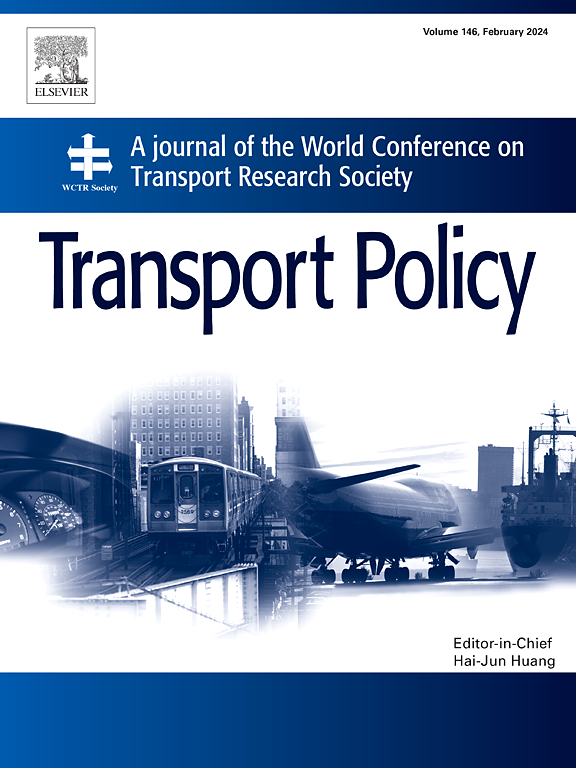Examining riders' subjective equity standards for transit Service: How will they shape future transit planning and operations?
IF 6.3
2区 工程技术
Q1 ECONOMICS
引用次数: 0
Abstract
Transportation equity is built on the foundation of distributing the benefits and costs resulting from policies and plans in a fair, just, and inclusive manner. However, with the varied and sometimes vague normative interpretations and definitions of equity, there remains a lack of clarity on what equity truly means for different stakeholders. Subjective viewpoints of equity within the public remain largely unexplored, leaving a critical gap in the understanding of societal expectations of transportation equity. This article investigates the subjective equity viewpoints of transit users. The goal of this research is to examine diverse user perceptions of equity standards informed by distributive justice theories, which describe how society should distribute transit benefits among users. The modeling relies on a 2022 survey of 2640 public transportation riders in the wider Chicago area. Using latent class analysis, we identify preference segmentation in transit equity standards, revealing four distinct classes of equity ideals and highlighting a plurality of rider values. We link class membership probabilities to rider profiles, ridership barriers, and land-use variables, uncovering the nuanced determinants of class belonging. Our discussion addresses the implications for transit planning and policy, emphasizing the importance of acknowledging plurality of subjective equity standards. We anticipate that these findings will influence future planning processes, and engagement strategies, and help identify the root causes of perceived inequities in public transit.
考察乘客对交通服务的主观公平标准:它们将如何影响未来的交通规划和运营?
交通公平是建立在以公平、公正和包容的方式分配政策和计划的收益和成本的基础上的。然而,由于对公平的规范性解释和定义各不相同,有时甚至含糊不清,对于不同的利益相关者来说,公平的真正含义仍然不明确。公众对公平的主观看法在很大程度上仍未得到探索,在理解社会对交通公平的期望方面留下了一个严重的差距。本文调查了公交用户的主观公平观点。本研究的目的是通过分配正义理论来检验不同用户对公平标准的看法,分配正义理论描述了社会应该如何在用户之间分配交通利益。该模型基于2022年对芝加哥广大地区2640名公共交通乘客的调查。利用潜在类别分析,我们确定了交通公平标准中的偏好细分,揭示了四种不同的公平理想类别,并突出了多个骑手价值观。我们将阶级成员概率与骑手概况、骑手障碍和土地使用变量联系起来,揭示了阶级归属的微妙决定因素。我们的讨论讨论了对过境规划和政策的影响,强调了承认主观公平标准多元性的重要性。我们预计,这些发现将影响未来的规划过程和参与战略,并有助于确定公共交通不平等的根本原因。
本文章由计算机程序翻译,如有差异,请以英文原文为准。
求助全文
约1分钟内获得全文
求助全文
来源期刊

Transport Policy
Multiple-
CiteScore
12.10
自引率
10.30%
发文量
282
期刊介绍:
Transport Policy is an international journal aimed at bridging the gap between theory and practice in transport. Its subject areas reflect the concerns of policymakers in government, industry, voluntary organisations and the public at large, providing independent, original and rigorous analysis to understand how policy decisions have been taken, monitor their effects, and suggest how they may be improved. The journal treats the transport sector comprehensively, and in the context of other sectors including energy, housing, industry and planning. All modes are covered: land, sea and air; road and rail; public and private; motorised and non-motorised; passenger and freight.
 求助内容:
求助内容: 应助结果提醒方式:
应助结果提醒方式:


